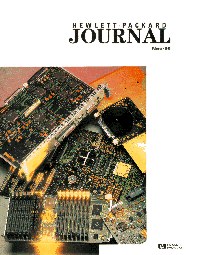|

Electrophoresis refers to the movement of molecules through a fluid or gel
under the influence of an electric field. It is useful for separating the
components of a mixture, since different molecules move at different rates.
Gel electrophoresis has become familiar as a result of the DNA spot patterns
seen frequently in the news media. In capillary electrophoresis (CE), the
gel is replaced by a fluid inside a capillary, a glass tube about the size
of a hair in diameter and about a meter in length. Near the end of the capillary
is a detector, which measures the amount of light absorbed by the fluid in
the capillary. As the various molecules, now separated into bands, pass the
detector, the detector output voltage describes a series of peaks that can
be analyzed to determine what was in the mixture and how much of each component
was present. In some cases, CE makes analyses possible that can't be done
otherwise. In other cases, it provides useful confirmation of analyses done
by other methods. For these reasons, CE has become an established separation
method along with gas chromatography (familiar for pollution analysis) and
liquid chromatography (drug testing). The article on page 6 provides a more detailed introduction to this relatively new analytical
technique and recounts the history of CE research at HP, which has led to the
development of the new HP G1600A capillary electrophoresis instrument described
in the article on page10. The objectives for the design of this instrument were to overcome the perceived limitations of existing instruments in the areas of automation, sensitivity,
reproducibility, usability, and information output. Major contributions to
the sensitivity and information objectives are made by the detector and capillary
designs. The detector (page 20) is a diode array detector, which measures light absorption over a range of wavelengths, thereby providing spectral information that's useful in identifying
unknown compounds. Sensitivity is improved by a new optical design of the
detector and an improved deuterium light source. The detector works eith with
standard capillaries or with capillaries that have an extended lightpath, a
bubble three to five times the diameter of the capillary, which helps increase
the amount of light absorbed, thereby improving the signal-to-noise ratio.
Details of this "bubble cell" technology can be found in the article on page
62. Contributions to the automation and usability objectives are made by
the design of the capillary handling and sample injection techniques (pages
25 and 32
), by the separation control electronics and firmware (page 36), and by the user interface design (page 44). Capillaries are mounted in cassettes, and all the necessary connections
between the capillary and the rest of the system are made automatically when
the cassette is inserted. Temperature control, vial movement and pressurization,
capillary flushing, sample injection, and buffer liquid replenishment are also
handled automatically under program control. The user interface is implemented
in HP ChemStation software running on a personal computer. Analytical methods
are developed and tested (by simulation) on the ChemStation and downloaded
to the CE instrument, where they run automatically. The reproducibility of
each instrument is verified by an extensive final test procedure as described
in the article on page 50. CE research at HP is continuing in several areas including the treatment
of capillary surfaces for protein analysis, as described in the article on
page 57.
What happens if your PC's hard disk-or worse, your network server's hard disk-crashes?
RAID technology (RAID stands for Redundant Array of Inexpensive Disks) offers
PC-based systems cost-effective data protection against a disk failure by providing
an array of disk drives under the command of a single controller. HP Disk
Array (page 71) delivers RAID data protection along with other features such as predictable
failure notification, automatic failure detection, and automatic disk-failure
recovery. Many RAID systems are hard to install and configure and do not make
it easy to recover from a disk failure. HP Disk Array comes with software utilities
that address this problem. The hardware also offers ease-of-use features such
as automatic identification and the ability to replace a disk drive while the
system is in operation.
COBOL is still the preferred programming language for a large number of critical
business applications. Many companies are now moving these applications to
open systems. COBOL SoftBench (page 82) gives software developers the tools they need to make this transition
without having to rewrite their applications in another language such as C
or C++ (they can, if they wish, use these languages for some routines and COBOL
for others). The widely used SoftBench CASE (computer-aided software engineering)
environment provides a highly integrated toolset that includes a program editor,
a program builder, a static analyzer, a COBOL animator, a COBOL profiler, a
file comparator, and email, along with dozens of third-party tools. A mouse,
a menu-driven user interface, graphical views of complex programs, and automation
of repetitive tasks using the SoftBench message connector improve productivity
and minimize the learning curve for novice users.
Two papers in this issue are from the 1994 HP Design Technology Conference.
Designers of a custom integrated circuit needed to provide their chip vendor
with documentation describing the data path and control portion of their chip.
The article on page 88 explains how they
used commonly available electronic schematic capture
software to ensure that the documentation they provided always matched the
descriptions they were using for simulation. In designing an interface between
a 60-megahertz bus and a 120-megahertz bus, one HP design group chose to use
standards cells and automatic place and route tools instead of a custom design
(page 92 ). They recommend the approach for its reduced risk and the ease of making
design changes.
R.P. Dolan
Editor
|
|